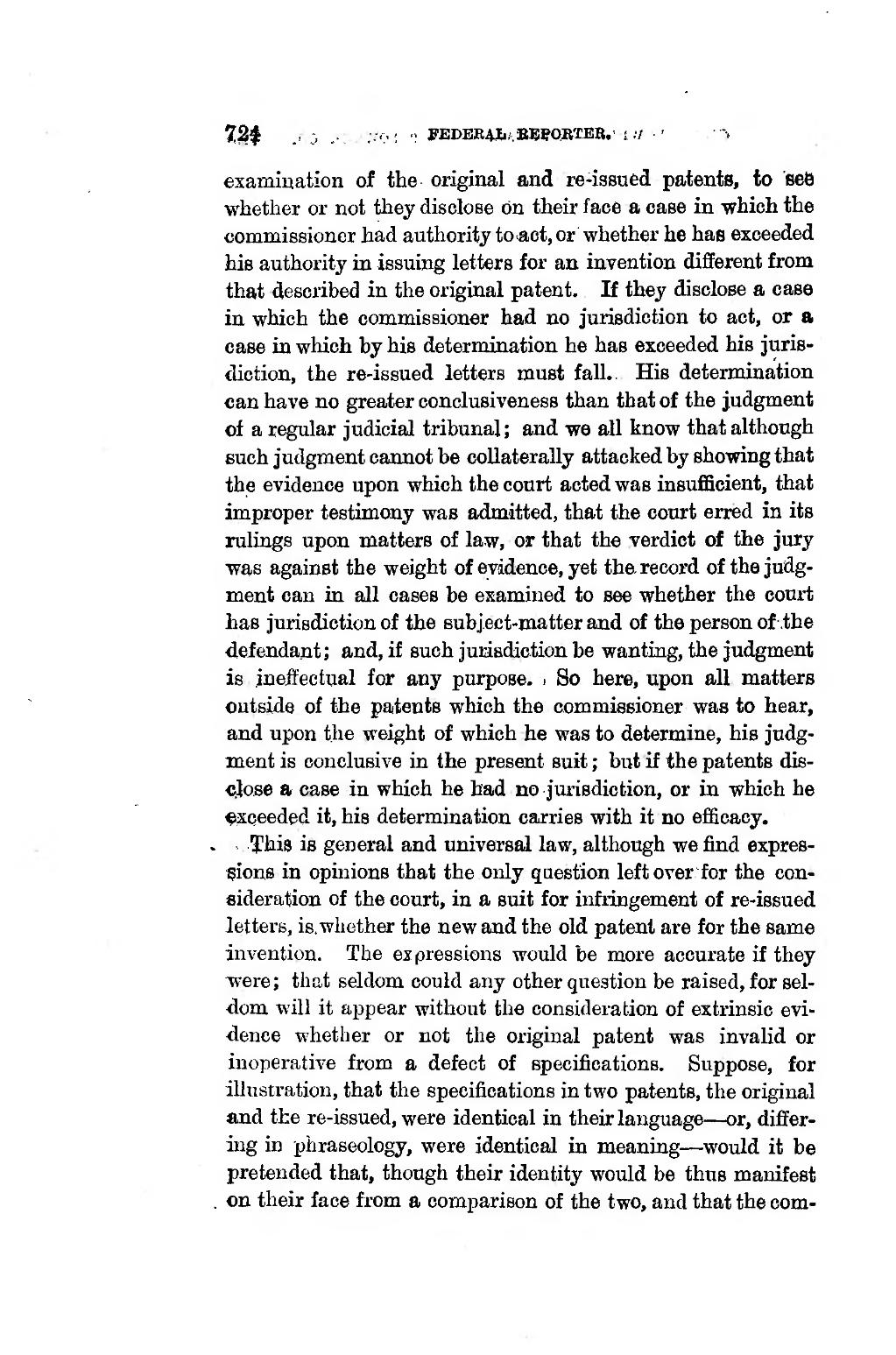examiuation of the original and re-issued patents, to seô whether or not they disclose on their face a case in whichthe commissioncr had authority to act, or whether he has exceeded his authority in issuing letters for an invention different from that described in the original patent. If they disclose a case in which the commissioner had no jurisdiction to act, or a case in which by his determination he has exceeded hia juris- diction, the re-issued letters must fall. His determination can have no greater conclusiveness than that of the judgment of a regular judicial tribunal; and we ail know thatalthough such judgment cannot be collaterally attacked by showing that the evidence upon which the court acted was insuflScient, that improper testimony was admitted, that the court erred in its rulings upon matters of law, or that the verdict of the jury was against the weight of evidence, yet the record of the judg- ment can in ail cases be examined to see whether the court has jurisdiction of the subject-matter and of the person of the defendant; and, if such juriadiction be wanting, the judgment is ineffeetual for any purpose. j So here, upon ail matters outside of the patents which the commissioner was to hear, and upon the M'eight of which he was to determine, his judg- ment is eonclusive in the present suit ; but if the patents dis- close a case in which he had no jurisdiction, or in which he exceeded it, his determination carries with it no efficaey. �This is general and universal law, although wefind expres- sions in opinions that the only question leftover for the con- sideration of the court, in a suit for infringement of re-issued letters, is. whether the new and the old patent are for the same invention. The expressions would be more accurate if they were; that seldom could any other question be raised, for sel- <lom will it appear without the consideration of extrinsic evi- dence whether or not the original patent was invalid or inoperative from a defect of specifications. Suppose, for illustration, that the specifications in two patents, the original and the re-issued, were identical in their language — or, differ- ing in phraseology, were identical in meaning — would it be pretended that, though their identity would be thus manifest on their face from a comparison of the two, and that the com- ����
